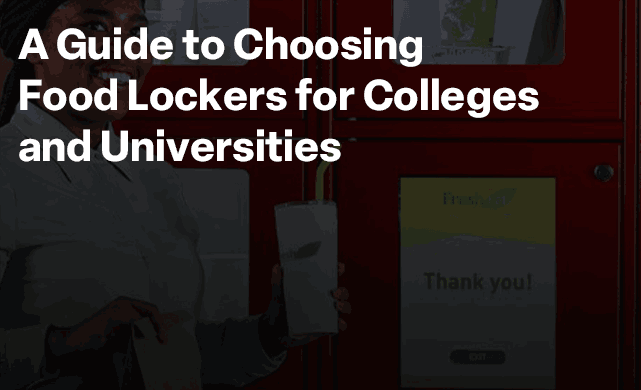As college and university campuses become more diverse and dynamic, so do the needs of the students. One essential aspect of student life is access to convenient and secure food storage options. Food lockers have emerged as a popular solution, offering students a reliable way to store their meals, snacks, and perishables. In this comprehensive guide, we'll explore the factors to consider when choosing food lockers for colleges and universities.
1. Space and Placement: The first step in selecting food lockers is determining where they will be placed on campus. Consider high-traffic areas such as dormitories, common areas, or near cafeterias. The lockers should be easily accessible to students, minimizing the distance they have to travel to store or retrieve their food.
2. Size and Capacity: Food lockers come in various sizes, so it's crucial to choose ones that accommodate the needs of your student population. Assess the average quantity of items students might want to store, including meals, beverages, and snacks. Locker sizes should be versatile enough to hold both small and large containers.
3. Security and Technology: Security is paramount when it comes to food lockers. Look for lockers with advanced locking mechanisms such as keypad entry, RFID cards, or biometric authentication. These options ensure that only authorized individuals can access the lockers. Additionally, consider integrating a monitoring system to prevent misuse or theft.
4. Hygiene and Maintenance: Food safety and hygiene are of utmost importance. Opt for lockers with easy-to-clean surfaces and materials that resist bacterial growth. Incorporating ventilation systems can help maintain optimal temperature and air quality inside the lockers, preventing food spoilage.
5. Customization and Branding: Many colleges and universities take pride in their unique identity. Select food lockers that can be customized to match the campus aesthetics or branding. Customization options may include the ability to choose colors, add logos, or display messages.
6. Payment and Accessibility: Determine whether the food lockers will be free for students to use or if a payment system will be implemented. Some institutions offer locker access as part of a meal plan, while others might charge a nominal fee. Make sure the payment process is user-friendly and well-integrated into campus systems.
7. Integration with Campus Apps: In today's tech-savvy environment, integrating food locker access with campus apps or student portals can enhance convenience. Students can use their smartphones to reserve, unlock, and monitor their lockers, streamlining the process.
8. Sustainability Considerations: As sustainability becomes a priority, choose lockers that align with your institution's green initiatives. Look for options made from eco-friendly materials and those designed for energy efficiency.
9. Feedback and Student Involvement: Before finalizing your decision, gather input from students. Conduct surveys or focus groups to understand their preferences and needs regarding food storage. Their insights can help fine-tune your selection and ensure that the chosen lockers meet student expectations.
Selecting food lockers for colleges and universities involves a careful balance of convenience, security, and customization. By considering factors such as space, size, security, hygiene, customization, payment, and sustainability, you can find the perfect food locker solution that enhances student life and contributes to a seamless campus experience. Remember, the ultimate goal is to provide a reliable and user-friendly resource that reflects the institution's commitment to its students' well-being and convenience.


















